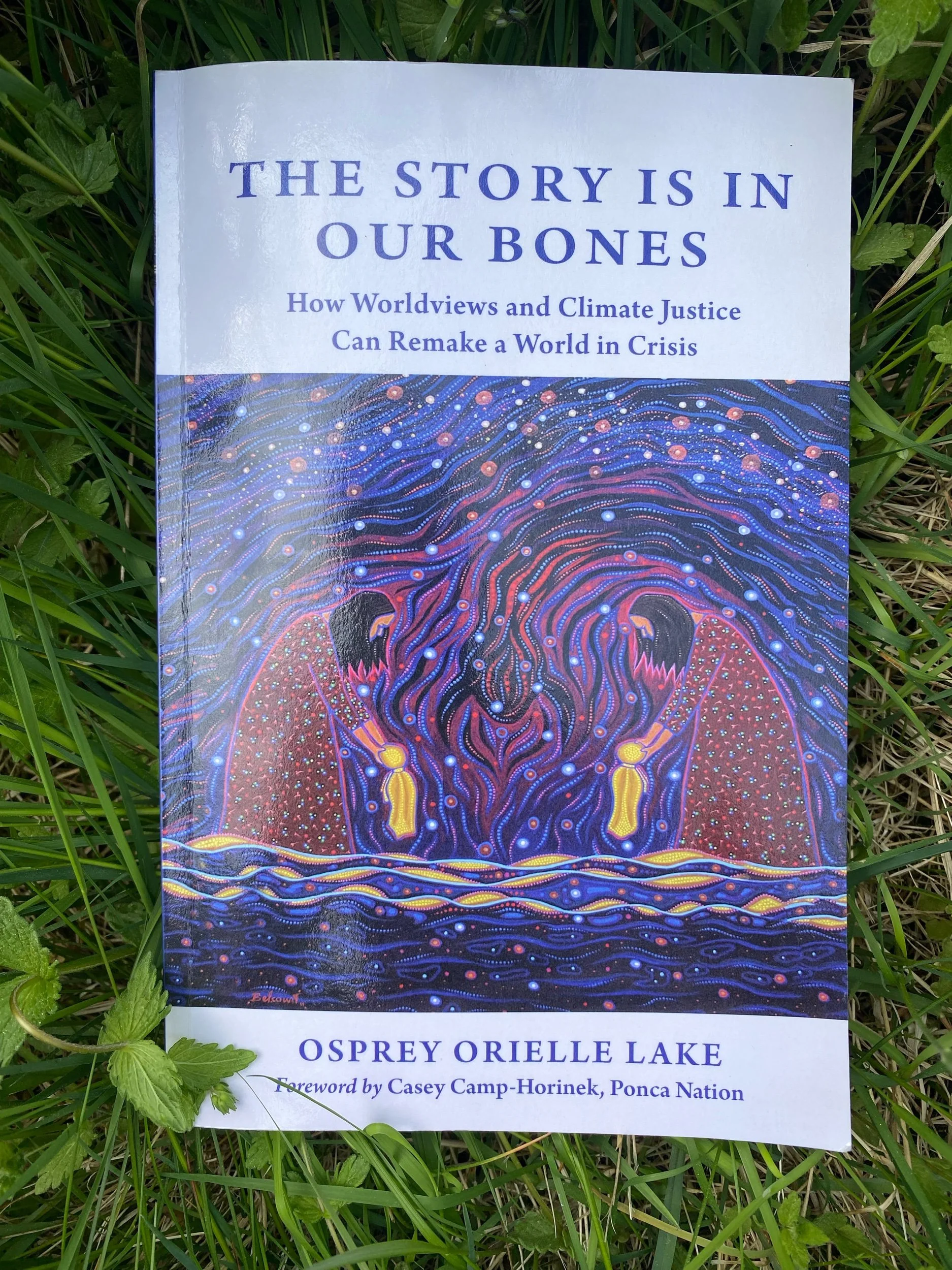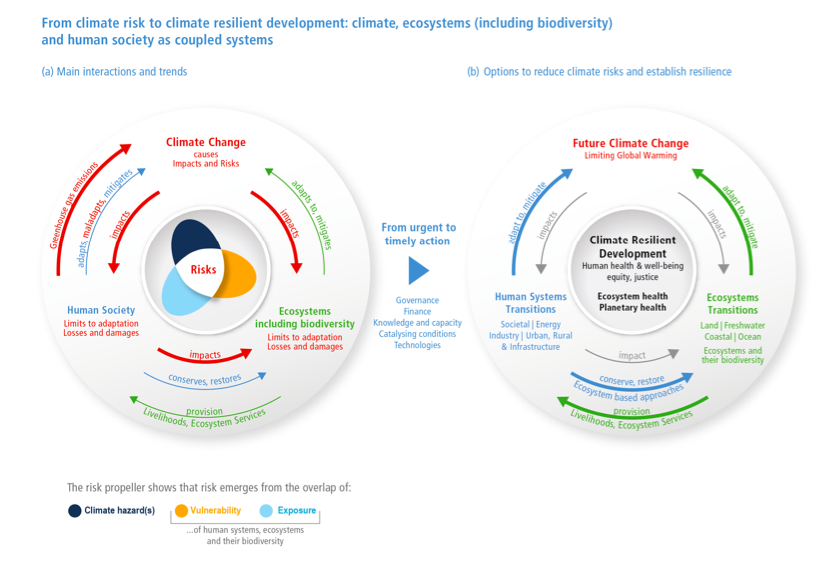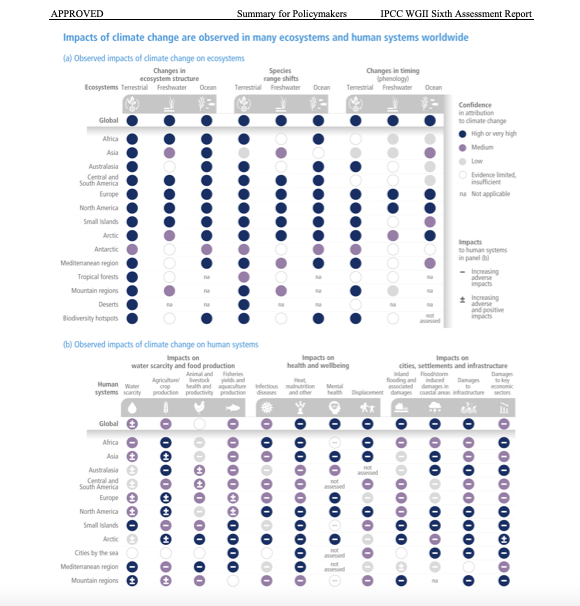Never have I read a more clearly written IPCC report, and never have the scientists behind it been more direct in their plead. Every aspect of what we do to planet Earth matters, be it positive or negative, but what we must realise is that it is all connected and it matters.
In the latest IPCC report, which is the newest climate research available, the scientists are doing their best to have clear formulations and models to show us the current state of our joint home, and give us prospects of what is to come. I find that this report is very reader-friendly, but regardless, I will try to highlight some of the main aspects and also draw attention to how we can understand some of the illustrations.
In this first model, we can see in circle (a) the way the red arrows representing climate change are negatively impacting human society and ecosystems including biodiversity. But we are also given another option, circle (b) which shows us the way to climate resilient development and ecosystem and planetary health. A key outtake here is that when we restore nature and aid biodiversity, it directly impacts both human health, well being, equity and justice to the planet. Images like this is trying to help us understand how interconnected it all really is, and that we can not have one without the other.
In this model (a), the scientists aim is to communicate the level of probability that climate change will impact the different regions of the world and their resources. This is illustrated and explained with the colour coordinates to the right in the image, where dark blue indicates high or very high confidence that climate change will impact for example species living on land in Africa (see the grey headlines at the top). In the second model (b) a minus sign indicates more negative consequences for example see the first row with Africa and water scarcity. This way, when you follow the different columns horizontally, it becomes evident that all aspects of human life as we know it will be affected by climate change, from mental health to displacement of people.
Personally, I find that this clear language makes it just all the more evident that climate considerations needs to be at the foundation for every decision made, be it from politicians or house builders, because every little or small action will have a massive impact on a global scale. It already matters, but the significance of what we do today will increase tenfold. Which is clearly illustrated by this next image:
The horisontal line of this model (a) shows a timeline at the bottom stating the years passing. The vertical line shows the temperature rise. The different colour codes shows the very likely range of temperature rise. To understand the rest of these models (b),(c),(d) and (e), you have to look at the same vertical temperature line and read both the heading and the text at the bottom. For example model (b) shows us a coloured graph of impacts and risk of global warming assuming low or no adaptation to mitigate. You can read the coloured graph from white (undetectable), to yellow (moderate), to red (high) to purple (very high). You can then follow the different temperature rise and read for example that at 2 degrees temperature rise, there will be a very high risk to unique and threatened systems.
This last model is a picture of hope. Even though this model illustrates a path that we have already made more difficult for us to achieve, (see the “missed opportunity” line at the top), it is still possible to achieve the 1,5 degree target goal, and with it be on the path to a climate resilient future. But the model clearly states that the way to this future is by taking into account all the steps of ecosystem stewardship, equity and injustice, inclusion and knowledge diversity into all decisions being made. This is truly key for us to end up at the scenario to the top right with well being, low poverty, ecosystem health, equity and justice, low global warming levels and low risks.
The climate literature is now very clear - we adapt right now, not in 10 years time, because this coming decade will determine how the future on planet Earth will be. Most of us is not climate scientists, but all of us still have a way to make an impact in each of our communities, be it at your school, your workplace, at national level with elections or in your personal life. The sum of all the decisions we take will impact how the graph is pointing. It is not a matter of which actions to take, we must take all the right actions at this point in time. The luxury of time has passed us. It is up to all of us to make the right decisions for the climate.
Source: IPCC Sixth Assessment Report.









